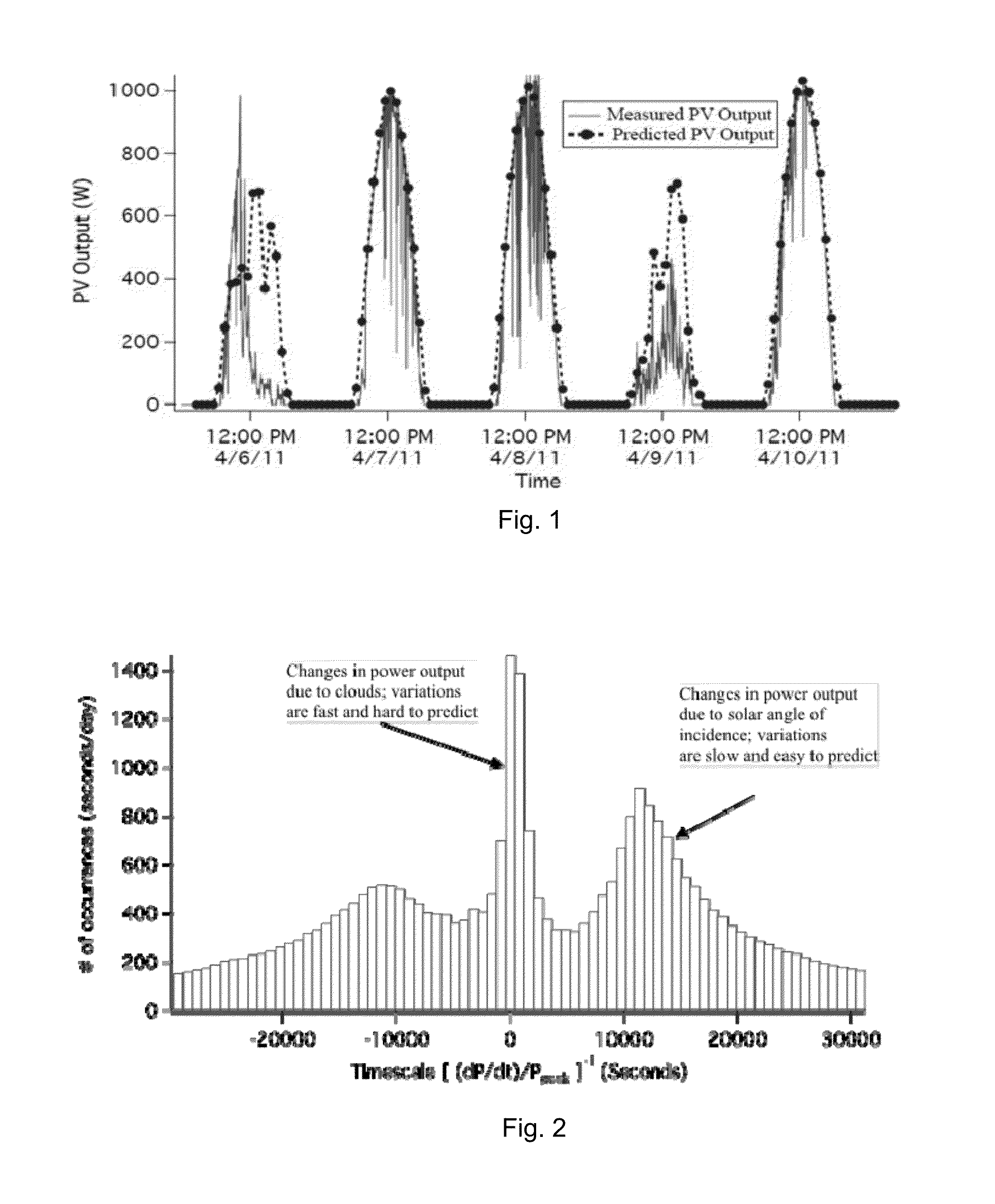Solar irradiance measurement system and weather model incorporating results of such measurement
- Summary
- Abstract
- Description
- Claims
- Application Information
AI Technical Summary
Benefits of technology
Problems solved by technology
Method used
Image
Examples
example 1
[0042]In one embodiment of the invention, forecasting solar-power intermittency due to clouds is effectuated with the analysis of digital images acquired with a ground-based, suntracking camera disposed on an equatorial mount, an example of which is discussed in the portion of the U.S. patent application 61 / 857,144 titled “Forecasting Solar power Intermittency Using Ground-Based Cloud Imaging” and is presented in Appendix C thereof. According to this embodiment, a camera is placed at a PV installation such that it images the sky from the perspective of the PV installation. The camera is mounted on an equatorial mount such that one of its axes of rotation is parallel to the earth's access of rotation. A stepper motor rotates the camera along this axis at an angular velocity of approximately 360 degrees / 24 hours such that the camera tracks the sun, the camera being positioned such that the sun is in the center of the camera's field of view. The equatorial mount also allows the camera ...
example 2
[0060]In one specific implementation, the measurement system includes a ground-based sensor system including a grid of PV modules enabling the inference of the PV power output directly from the output of other PV modules and without independent estimates of cloud height, density, reflectivity, or spectral properties. The principal input to the forecasting algorithm includes measurements of PV power output from a multitude (in a specific example—eighty) residential systems distributed over a 50 km by 50 km area (in a specific example—on rooftops) and used to forecast PV power output. Measurement data are recorded at specified time intervals (for example, 15-minute intervals), and each measurement represents the AC power averaged over the previous time interval (in this case—15 minutes). Such a network has better spatial and temporal resolution than currently available operational forecasts based on GOES satellite (which has resolution of about 10 km and a data update rate of about an...
example 3
[0075]In one embodiment, a cloud shading algorithm is based on determining the “clear-sky expectation” for the output of each system (described above, and in the material incorporated by reference into this application), which is later corrected for outages, system orientation, and partial shade due to permanent obstacles (that do not include clouds). The “clearness index” K is then defined as a time-dependent ratio of the irradiance at the plane of the detector array, denoted as POA(t), and the modeled irradiance at the same plane in the absence of clouds, denoted as POAclear(t):
K(x,y,t)=POA(x,y,t)POAclear(x,y,t)(17)
[0076]Since the output of any particular PV system normalized by peak power is approximately proportional to POA irradiance, then
Ki=pi(t)pi,clear(t)(18)
[0077]where pi(t) is the normalized power output for the ith PV system and pi,clear(t) is the power that would be generated under the clear sky.
[0078]The value of the clearness index takes into account the opacity of the...
PUM
 Login to View More
Login to View More Abstract
Description
Claims
Application Information
 Login to View More
Login to View More - R&D
- Intellectual Property
- Life Sciences
- Materials
- Tech Scout
- Unparalleled Data Quality
- Higher Quality Content
- 60% Fewer Hallucinations
Browse by: Latest US Patents, China's latest patents, Technical Efficacy Thesaurus, Application Domain, Technology Topic, Popular Technical Reports.
© 2025 PatSnap. All rights reserved.Legal|Privacy policy|Modern Slavery Act Transparency Statement|Sitemap|About US| Contact US: help@patsnap.com



